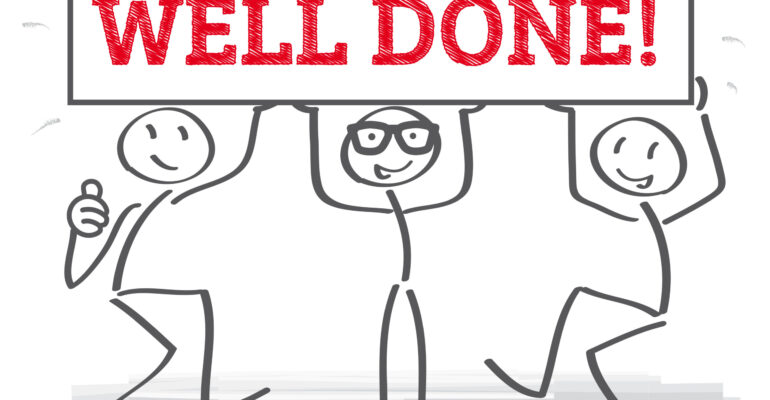Best Practices for Delivering Reinforcement in Contingency Management
Contingency Management (CM)[1] is a powerful behavioral therapy approach that utilizes positive reinforcement to promote desired behaviors and discourage problematic ones. Central to the success of CM interventions is the effective delivery of reinforcement, which plays a crucial role in shaping behavior change. This article explores strategies and best practices for delivering reinforcement in CM to optimize treatment outcomes and enhance client engagement.
Understanding Reinforcement in Contingency Management
In CM, reinforcement[2] refers to the process of rewarding individuals when they exhibit target behaviors. These rewards serve as incentives to increase the likelihood of desired behaviors recurring in the future. Reinforcement can be tangible (e.g., monetary rewards, vouchers) or intangible (e.g., praise, privileges), depending on what motivates the individual.
Key Principles of Effective Reinforcement Delivery
- Immediate and Consistent
Reinforcement[3] should be delivered promptly after the desired behavior occurs to strengthen its association with the reward. Consistency in reinforcement schedules helps maintain motivation and clarity about expectations.
- Contingent on Targeted Behaviors
Ensure that reinforcement is contingent upon the performance of specific, measurable behaviors outlined in the treatment plan. Clear criteria for earning reinforcement minimize ambiguity and support objective evaluation. - Gradual Shaping of Behavior
Use shaping techniques to reinforce incremental steps toward achieving larger behavioral goals. Start with reinforcing smaller achievements and gradually increase expectations as progress is made.
- Individualized Approach
Tailor reinforcement strategies to match the preferences and motivations of each client.[4] Consider cultural background, personal interests, and intrinsic motivators to enhance the relevance and effectiveness of rewards.
Strategies for Delivering Effective Reinforcement
- Positive Reinforcement
Offer praise, tokens, or privileges immediately following the display of targeted behaviors. Verbal acknowledgment and encouragement can reinforce efforts and boost self-esteem.[5]
- Reward Schedules
Implement varied reinforcement schedules, such as fixed ratio (reward after a set number of behaviors), variable ratio (reward after varying numbers of behaviors), fixed interval (reward after a specific time interval), or variable interval (reward after varying time intervals).[6] This diversity helps prevent habituation and maintains motivation.
- Incentives and Rewards
Provide incentives that are meaningful and valued by the client. These may include gift cards, access to preferred activities, or tangible goods aligned with individual interests and goals.
- Social Reinforcement
Utilize social reinforcement by incorporating peer support, group recognition, or public acknowledgment of achievements. Social reinforcement fosters a sense of community and encourages clients to support one another in achieving shared goals.[7]
Implementing Effective Reinforcement Delivery in Practice
- Behavioral Contracts
Develop clear agreements outlining the behaviors to be reinforced, the criteria for earning rewards, and the schedule of reinforcement. Behavioral contracts[8] promote accountability and serve as a reference point for tracking progress.
- Data-Driven Decision Making
Monitor and evaluate the effectiveness of reinforcement strategies using objective data. Adjust reinforcement schedules or types based on client progress and feedback to maximize motivation and sustain behavior change.
- Continuous Feedback and Support
Provide ongoing feedback to reinforce positive behaviors and address challenges promptly. Collaborate with clients to identify barriers to success and adjust reinforcement strategies accordingly.
Benefits of Effective Reinforcement Delivery in CM
- Enhanced Motivation[9]: Well-delivered reinforcement increases intrinsic motivation and commitment to achieving behavioral goals.
- Improved Treatment Adherence: Clients are more likely to adhere to treatment protocols when reinforcement is consistently tied to desired behaviors.[10]
- Sustained Behavior Change: Effective reinforcement strategies support long-term behavior modification by reinforcing adaptive behaviors and reducing reliance on maladaptive coping mechanisms.
Conclusion
Effective delivery of reinforcement in Contingency Management is fundamental to promoting behavior change and improving client outcomes. By applying principles of immediacy, consistency, and individualization, clinicians can create a supportive environment that encourages clients to achieve and maintain positive behavioral changes. Through strategic reinforcement strategies, CM empowers individuals to build resilience, enhance self-efficacy, and lead fulfilling lives aligned with their goals and values.
[1] Higgins, Stephen T., and Nancy M. Petry. “Contingency management.” Process-based CBT: The science and core clinical competencies of cognitive behavioral therapy (2018): 197-209.
[2] Petry, Nancy M., et al. “Prize reinforcement contingency management for treating cocaine users: how low can we go, and with whom?.” Addiction 99.3 (2004): 349-360.
[3] Stitzer, Maxine L., et al. “Community reinforcement approach and contingency management interventions for substance abuse.” Handbook of Motivational Counseling: Goal‐Based Approaches to Assessment and Intervention with Addiction and Other Problems (2011): 549-569.
[4] Stitzer, Maxine L., et al. “Community reinforcement approach and contingency management interventions for substance abuse.” Handbook of Motivational Counseling: Goal‐Based Approaches to Assessment and Intervention with Addiction and Other Problems (2011): 549-569.
[5] Metrebian, Nicola, et al. “Positive reinforcement targeting abstinence in substance misuse (PRAISe): Study protocol for a Cluster RCT & process evaluation of contingency management.” Contemporary clinical trials 71 (2018): 124-132.
[6] Stanger, Catherine, and Alan J. Budney. “Contingency management approaches for adolescent substance use disorders.” Child and Adolescent Psychiatric Clinics 19.3 (2010): 547-562.
[7] Higgins, Stephen T., and Randall E. Rogers. “Contingency management and the community reinforcement approach.” Evidence-based addiction treatment (2009): 249-266.
[8] Edgemon, Anna Kate, et al. “Using behavior contracts to improve behavior of children and adolescents in multiple settings.” Behavioral Interventions 36.1 (2021): 271-288.
[9] Ghani, Mohamad Salleh Abdul, Haslee Sharil Lim Abdullah, and Mohamad Isa Amat. “MEASURING THE EFFECTIVENESS OF CONTINGENCY MANAGEMENT INTERVENTION ON PATIENTS’TREATMENT ENGAGEMENT AND INTERNAL MOTIVATION: A RANDOMIZED CONTROLLED TRIAL.” Humanities & Social Sciences Reviews 7.1 (2019): 31-40.
[10] Ellis, Jennifer D., et al. “Contingency management for individuals with chronic health conditions: A systematic review and meta-analysis of randomized controlled trials.” Behaviour Research and Therapy 136 (2021): 103781.







